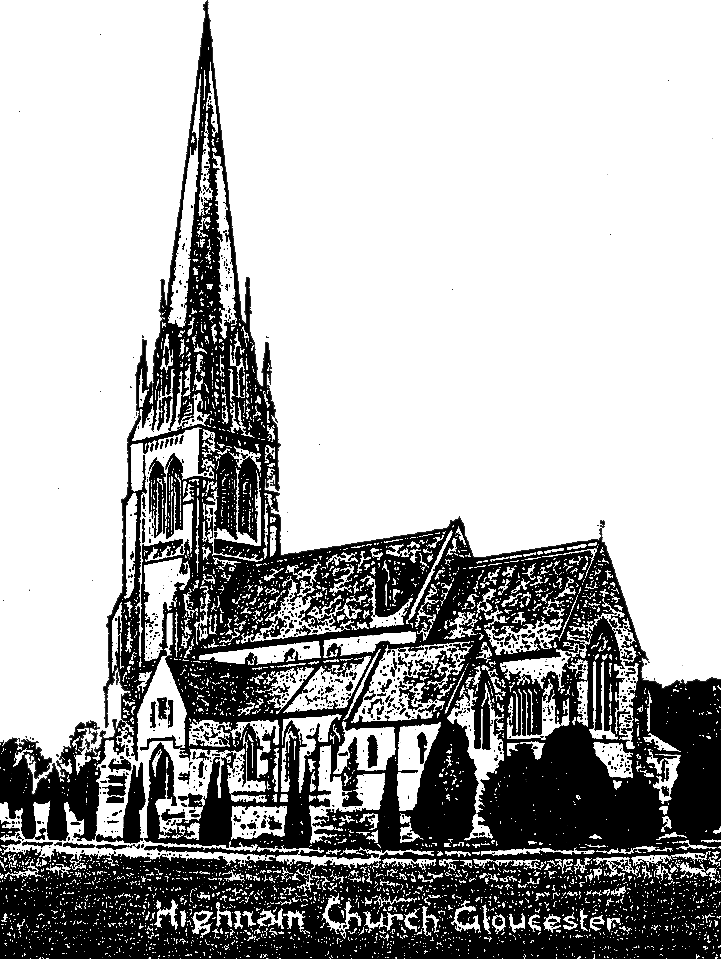CHURCHYARD REGULATIONS
The PCC agrees that The Church of England Diocese of Gloucester DAC Churchyard Regulations fourth edition 2020 including additions by the PCC will apply to Highnam Churchyard.
Memorial Stones
Requests for permission should be made in writing to the parish priest in the first instance. This is usually done in collaboration with your chosen memorial mason who should already have the correct application form [insert link to application form]. Please note that a minimum of six months must elapse between the burial of the person to be commemorated and the application for permission (3 months for cremated remains).
Permission for the parish priest must be obtained before any memorial is produced and erected.
1 Type
The Parish Priest can permit :
a) simple upright grave markers provided that they fall within the range and size and material
described below,
b) sloping ‘open-book’ memorials, provided that they fall within the range of size and material
described below,
c) wooden crosses provided that they do not exceed the dimensions described below,
d) additional inscriptions on existing memorials,
e) in respect of interment of cremated remains within a designated Garden of Remembrance, burial markers in accordance with local practice, provided that they fall within the range of permitted size and materials described below.
f) in respect of interment of cremated remains within an existing grave, simple flush horizontal markers.
2 Size
The parish priest may approve grave markers up to the following dimensions above ground:
For Burials : Height 4’ 0” (1200 mm) Width 3’ 0” (900 mm) Thickness 6” (150 mm) Plinth: Width 3′ 0″ (900 mm) Depth 18″ (450 mm)
For cremated remains on the North Bank :
Headstone : Height 18” Width 15” Thickness 4” Plinth: Width 15″ Depth 10″
Temporary Wooden cross
Elsewhere in the churchyard cremated remains may only be added to an existing grave (with family permission) and be marked with a Flush Fitting Horizontal Marker. Maximum size : Length 18″ Width 12″ Depth 2″.
3 Shape
The parish priest is not allowed to permit any other form of memorial, including horizontal ledger slabs, crosses other than wooden, kerbs, chippings, or sculpture. In the case of headstones, the memorial may be of the monolith type, i.e. fixed directly into the ground, or it may have a separate base and plinth.
4 Lettering
On any memorial permitted by the parish priest, the lettering may be incised or in relief, and may be infilled in black, gold or grey. Care should be taken in selecting the wording, and advice sought from the incumbent. An imaginative approach to the epitaph is encouraged but excessive sentimentality is to be avoided. The mason’s name or mark may be inscribed on the side or on the reverse in letters no larger than ½ inch (13 mm) in height. No other advertisement or trade marks may be inscribed on or fixed to a memorial.
5 Decoration
The parish priest may permit appropriate Christian or other symbols, for example depictions of items connected with the profession or leisure interest of the person commemorated. The parish priest is NOT allowed to permit photographs or ceramic portraits or any other form of depiction of the person commemorated.
6 Materials
The parish priest may permit memorials made of any natural stone or hardwood with the following exceptions:
• White marble
• Any granite other than unpolished grey
• Any other use of a reflective polished surface
Whenever there is doubt over the identity or suitability of any material, the matter should be referred in the first instance to the Benefice Secretary.
7 Maintenance
The PCC cannot be responsible for maintaining memorials in churchyards. Checks may however be carried out from time to time to ensure that memorials have not become hazardous. If it appears that a memorial is in a dangerous condition, the PCC may decide that it should be laid on the ground in order to avoid accidents. Those wishing to erect a memorial should bear in mind that the church insurances do not cover damage to churchyard memorials, and they may wish to consider arranging their own insurance cover. Anyone who erects a gravestone is legally responsible for any damage it might cause.
American-style Caskets
The parish priest may refuse to allow unusually large coffins. If you are proposing to order one of these, you should check whether it will be permitted in the churchyard. Funeral Directors are asked to point this out to their customers.
Flowers
Except where the design of a headstone includes an integral vessel for plants or cut flowers, flowers may only be placed in a removable container. Wreathes and cut flowers may be placed in such containers or laid on any grave, but must be removed as soon as they appear to be withered or dead.
Artificial flowers and other forms of non bio degradable decoration such as windmills and solar lights are not permitted in Highnam Churchyard. Artificial flowers are permitted for Remembrance Day poppies and Christmas wreaths. These are to be removed after one month.
The church officers will dispose of any wreaths, cut flowers or artificial flowers placed in the churchyard, if it is considered that they have deteriorated and/or become unsightly.
Bulbs and small annual plants may be planted in the soil of a grave, but not beyond its actual boundary.. No trees or shrubs may be planted without the agreement of the PCC.
Reservations
It is the policy of the PCC that a grave space may not be reserved.
